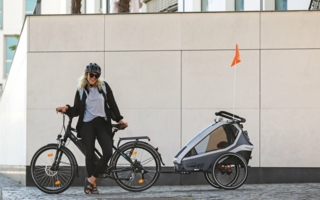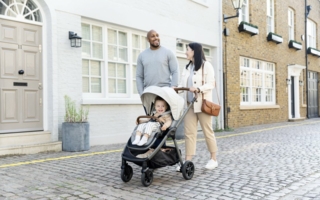25/11/2016 – Guest article GfK — auf Deutsch lesen
Baby carriages: Lighter and better equipped
Klaus Neefischer, Marketing Manager GfK, writes about current trends:
Parents-to-be often start looking for a suitable stroller before their baby is born. The choice of models is broad, the decision all the more difficult. Newborns have to lie flat. The larger prams are designed for infants to lie and sit. Buggies, on the other hand, are designed mainly for sitting. This is why they are used later and are usually smaller, lighter and more agile.
Whereas the GfK POS tracking panel (comprising the channels: hypermarkets/Cash&Carry as well as department stores/mail order companies/pure players/specialist baby and toy retailers (online)) showed that six out of ten of the strollers sold in the first half of 2014 were buggies, this figure dropped to five in the first six months of 2016. Prices have inched up marginally, averaging around EUR 93 and roughly matching the average for the first half of 2014. Considerably higher average prices were achieved for the prams. This can be explained, among others, by the fact that prams tend to be sold with additional accessories such as car seats and/or carrycots.
A distinctive trend has also emerged with respect to wheels: The proportion of three-wheel models is in marked decline, with the share of 27 % for the first half of 2014 sliding to just 16 % in the first six months of 2016. In the buggy category, one in five models sold are equipped with three wheels.
In spite of the trend towards more wheels, the models are becoming lighter. Whereas buggies were already relatively lightweight (the majority of models sold weigh between 5kg and 8 kg, approx. 20% weigh even less), their “big sisters” have really been shedding the pounds. In this category, it is mainly the models weighing more than 15 kg that have seen their weight drop, with a pronounced tendency towards strollers in the 8kg-12kg group – and rising.




